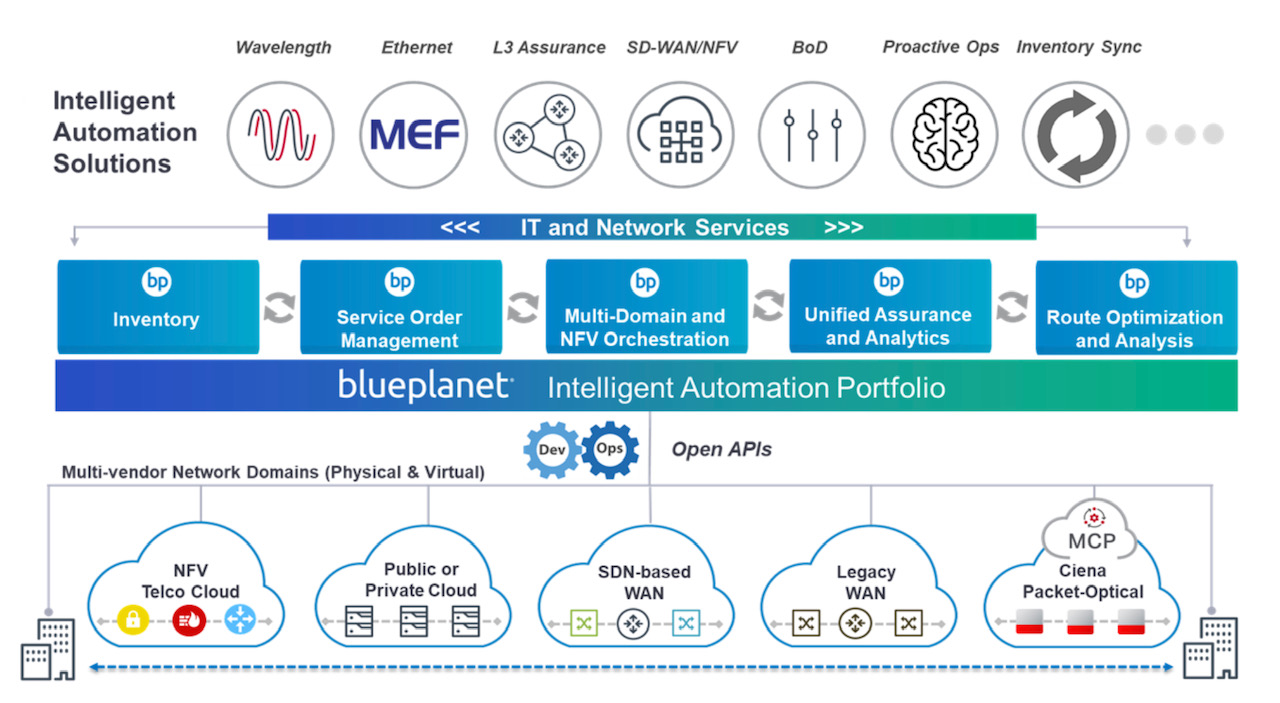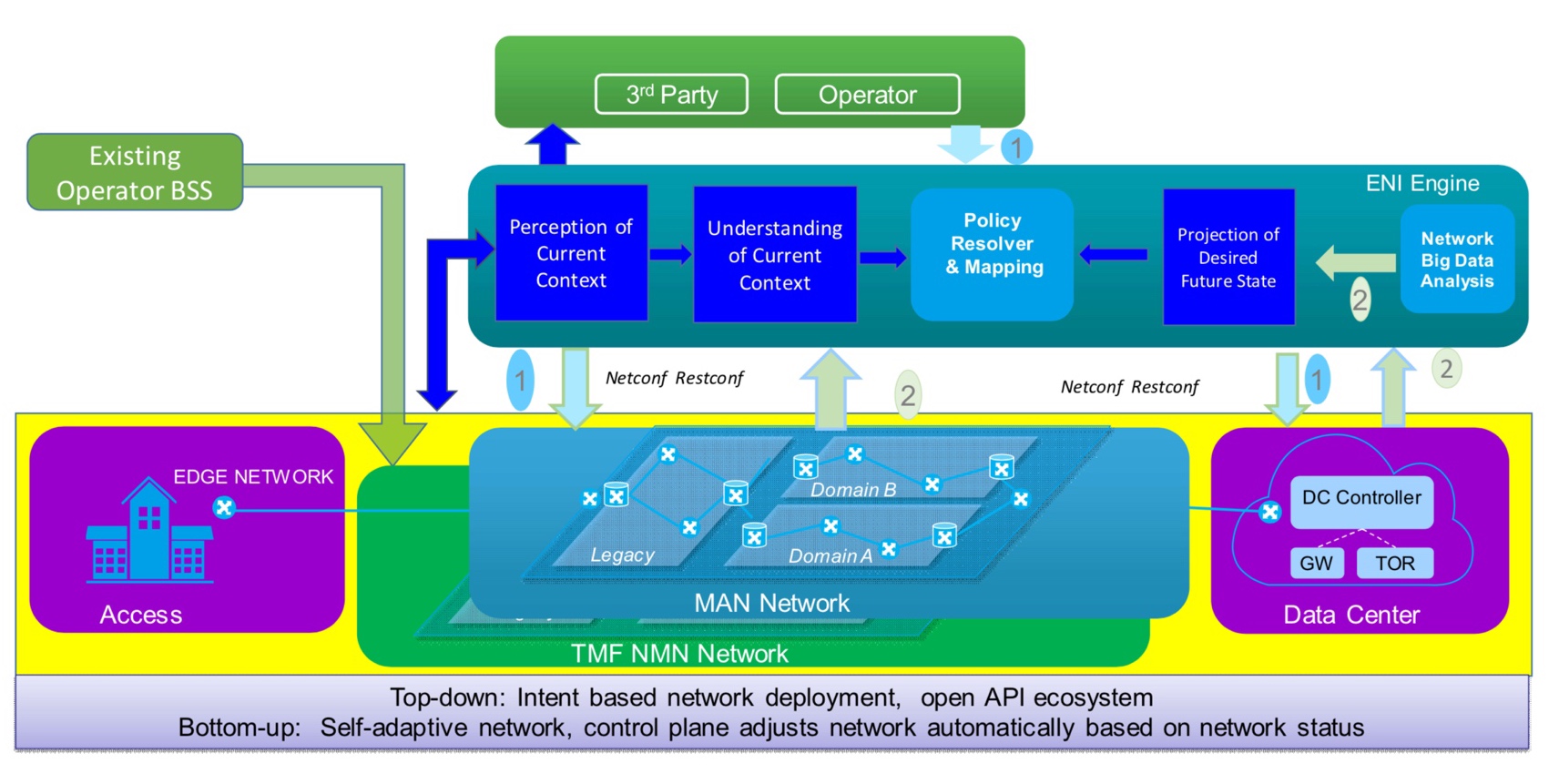The Blue Planet platform's ongoing automation journey
 Tuesday, June 15, 2021 at 2:05PM
Tuesday, June 15, 2021 at 2:05PM Vodafone UK is one operator that has recently chosen Ciena's Blue Planet for the management of its optical and IP networks. An interview with Ciena to understand what the Blue Planet network automation tool does.
Having some knowledge of a telco's operations helps in understanding the role of a network automation platform. So says Kevin Wade, senior director and product marketing team leader at Ciena Blue Planet.
 Source: Ciena
Source: Ciena
Service providers, like any business, have an operational infrastructure that begins with business processes. For a service provider, the process starts with a connectivity service request. The business processes capture the customer's order and deliver the requested service.
Once up and running, the service must be monitored and managed to ensure the service level agreement is upheld.
"Today, these processes are highly manual," says Wade. "Automation is being looked at and deployed more extensively to simplify these processes."






